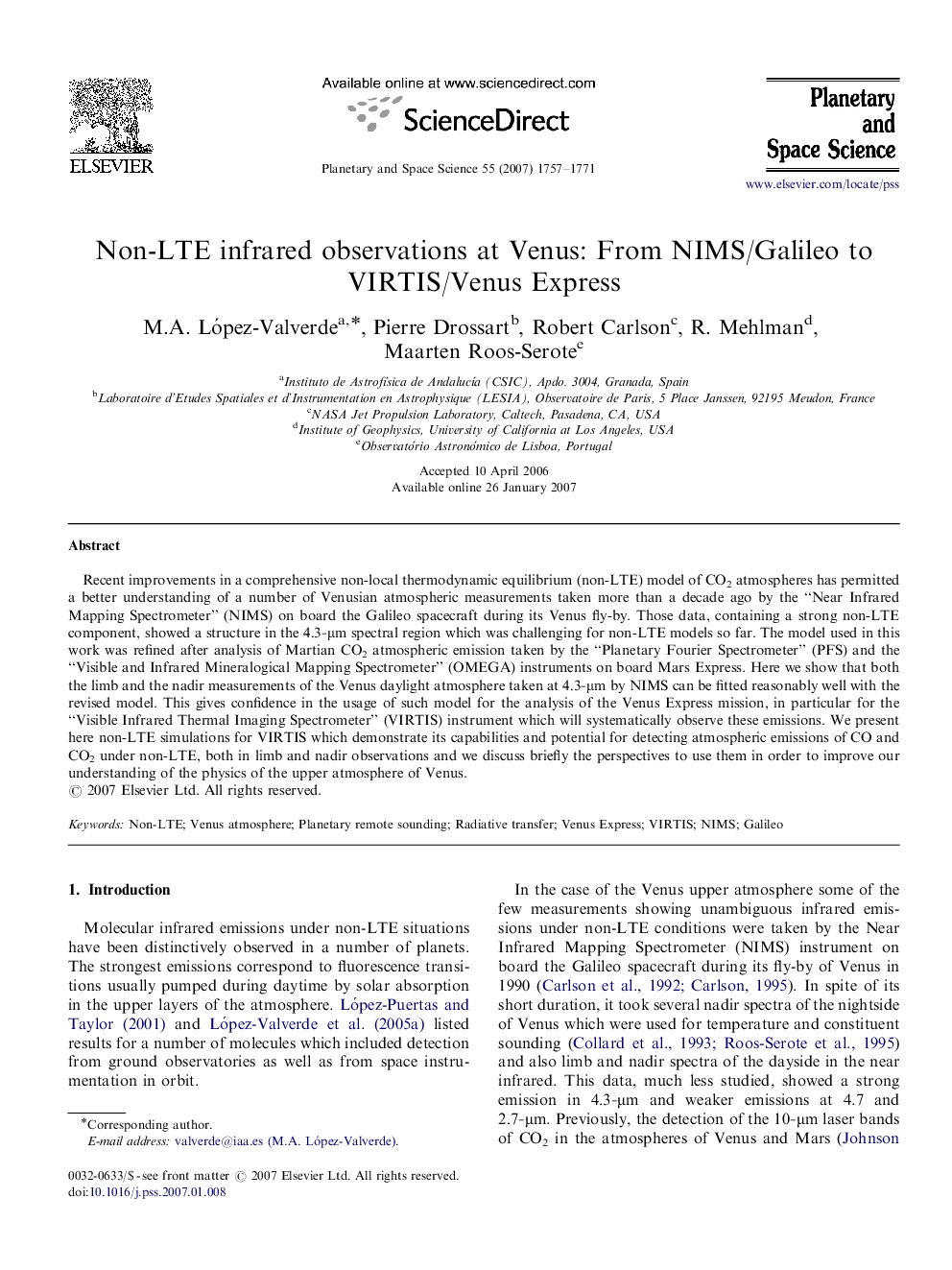| Article ID | Journal | Published Year | Pages | File Type |
|---|---|---|---|---|
| 1782881 | Planetary and Space Science | 2007 | 15 Pages |
Recent improvements in a comprehensive non-local thermodynamic equilibrium (non-LTE) model of CO2 atmospheres has permitted a better understanding of a number of Venusian atmospheric measurements taken more than a decade ago by the “Near Infrared Mapping Spectrometer” (NIMS) on board the Galileo spacecraft during its Venus fly-by. Those data, containing a strong non-LTE component, showed a structure in the 4.3-μm4.3-μm spectral region which was challenging for non-LTE models so far. The model used in this work was refined after analysis of Martian CO2 atmospheric emission taken by the “Planetary Fourier Spectrometer” (PFS) and the “Visible and Infrared Mineralogical Mapping Spectrometer” (OMEGA) instruments on board Mars Express. Here we show that both the limb and the nadir measurements of the Venus daylight atmosphere taken at 4.3-μm4.3-μm by NIMS can be fitted reasonably well with the revised model. This gives confidence in the usage of such model for the analysis of the Venus Express mission, in particular for the “Visible Infrared Thermal Imaging Spectrometer” (VIRTIS) instrument which will systematically observe these emissions. We present here non-LTE simulations for VIRTIS which demonstrate its capabilities and potential for detecting atmospheric emissions of CO and CO2 under non-LTE, both in limb and nadir observations and we discuss briefly the perspectives to use them in order to improve our understanding of the physics of the upper atmosphere of Venus.
